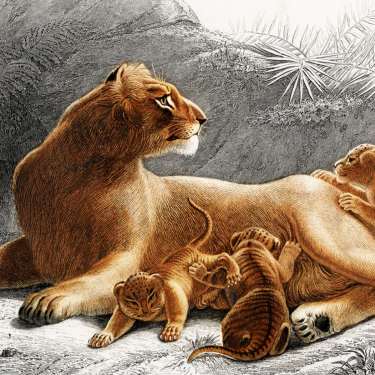Influencer
INTERACTION

Influencer (ID)
Quick definition
Enthusiastic and high-energy types. Creative and boisterous. Love learning. Social and crave recognition.
Average user score
76
Find your score on over 100 traits on Dimensional.
Download
ID types primarily demonstrate [I]nfluence traits followed by [D]ominant ones. They are high-energy and social at the core, and enjoy ideating new ideas and experimenting with new hobbies. Motivated by relationship-building and success, they are apt networkers who exhibit confidence and curiosity in their friendships and personal pursuits. They can be controlling, and like to be in charge of their own circumstances and environments.
Primary Qualities
- Infectious, high-energy individuals.
- Creative and original, crave success from their ideas.
- Social and supportive, love to learn about others.
Primary Motivations
- Convincing others of their ideas.
- Coming up with new concepts.
- Fostering genuine relationships with those around them.
- Learning about a variety of things.
- Being able to support and motivate others.
- Finding personal success.
Primary Fears
- Feeling as if their ideas aren’t recognized.
- Having to work or live mostly on their own.
- Having no creative control.
- Being in a controlled, structured environment.
- Not being recognized for their achievements.
Distribution of user scores
0
25
50
75
100
Other Archetypes in Interaction
Opposite
Archetype Breakdown
Influence
Dominant
Supportive
(DI)
(ID)
(IS)
(SI)
(SC)
(CS)
(CD)
(DC)
Cautious
Strengths
- Willing to take risks.
- Creative.
- Works well with others.
- Focusing on the long term.
- Very adaptable.
Weaknesses
- Struggle with independent work.
- Prioritize socializing.
- Dislike routine and regiment.
- Can become distracted with current tasks.
- Less effective when they spend too much time on a single task.
- Written communication.
Decision Making
- Good at deciding things quickly.
- Consult others prior to implementing ideas.
- Confident, sometimes too much, in their own decisions.
- Dislike taking too much time prior to decision making.
- Can overlook details.
- Make risky decisions.
Unhealthy Adaptations
- Struggle to see the validity of others' arguments.
- Don’t like to hold themselves accountable, blame others.
- Becoming frustrated if things don’t go according to plan.
- Risk takers to a fault.
- Can be illogical.
Recommendations for IDs
- Take time to consider others’ arguments and compare them with their own ideas.
- Recognize the need for planning.
- Slow down and consider the effects of an action before taking it.
- Focusing on listening rather than speaking.
ID types are excellent at motivating others. Naturally charismatic, they are good at rallying employees toward common goals or deadlines. Visionary and creative, they're willing to experiment and try new ideas. They can be so focused on success that they at times overlook details, and can be controlling of their reports in interest of reaching the success they crave.
Potential Leadership Strengths
- Excellent team builders.
- Great at motivating others.
- Know team strengths and assign work effectively.
- Get to know those around them.
- Visionary, see the long term.
- Willing to try new ideas.
Potential Leadership Weaknesses
- Struggle to see the severity of interpersonal or project issues.
- Not very organized, find implementing routine challenging.
- Can be too positive.
- Controlling.
- May overlook details and facts.
- Believe they are in the right.
When managing ID types, be sure to facilitate a space for collaboration and innovation. As this type thrives on positive feedback, be sure to let them know when they've successfully executed a project or task. As they value freedom and space, letting iDs work independently is a good idea once you've established trust in the workplace.
Strategies for Influencing IDs
- Always include positives in discussions.
- Develop a personal relationship with them.
- Acknowledge and listen to their ideas.
- Tell them it's okay to make mistakes.
Creating the Ideal Environment for IDs
- Facilitate a space for them to share and explain ideas.
- Include group work and collaboration.
- Encourage creativity.
- Try to avoid too much rigidity and regiment in the workplace.
Things to Avoid When Managing IDs
- Forcing them to work alone.
- Being excessively formal.
- Frequently checking in or monitoring their work.
- Not allowing freedom in their workplace habits.
IDs Communication Style
- Express themselves based on emotion, less fact based.
- Highly convincing.
- Love to discuss lots of different things in a single conversation.
- Speak with personal conviction.
- Very emotional conversationalists.
Strategies for Communicating With IDs
- Focus on the positives, yet recognize potential negatives.
- Always include emotions, not just facts.
- Be willing to be firm with instructions.
- Speak energetically and with passion.
- Include detailed information and evidence to reinforce points.
- Try to be solution-oriented.
- Recognize their accomplishments.






